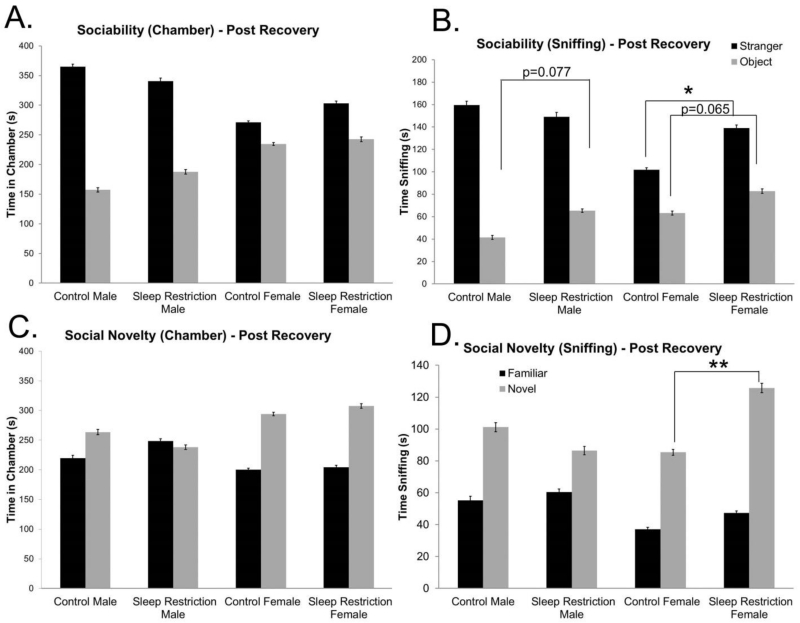Figure 5.
Social behavior is altered even after four weeks of recovery from chronic sleep-restriction. (A) Sociability test: time spent in the chamber after four weeks of recovery sleep (post-recovery) shows a statistically significant Sex × Chamber interaction and a near significant Sex × Condition interaction, indicating a sex-specific differential response to sociability post-recovery. Main effects of condition and chamber were statistically significant. (B) Sociability test: time spent sniffing following four weeks of recovery sleep (post-recovery) reveals a statistically significant Sex × Chamber interaction. Main effects of condition and chamber were also statistically significant. There was a close to statistically significant Condition × Sex × Chamber interaction. A post-hoc pairwise analysis reveals that sleep-restricted male mice had a trend toward statistically significant increase in time spent sniffing the object compared to controls. Sleep-restricted female mice had a statistically significant increase in time spent sniffing the stranger and a near significant increase in time spent sniffing the object compared to controls. These data show abnormalities in sociability following chronic sleep restricted that is sex dependent. (C) Social novelty test: time spent in the chamber following four weeks of recovery sleep (post-recovery) shows a statistically significant Sex × Chamber interaction and a statistically significant main effect of chamber. (D) Social novelty test: time spent sniffing measured four weeks after recovery sleep (post-recovery) reveals a statistically significant main effect of chamber, and a statistically significant Sex × Chamber, Sex × Condition, and Sex × Condition × Chamber interaction. A post-hoc pairwise analysis shows that sleep-restricted female mice had a statistically significant increase in time spent sniffing the novel mouse compared to controls. Bars represent the means ± SEMs in 11 control male, 13 sleep-restricted male, 22 control female, and 17 sleep-restricted female mice.

